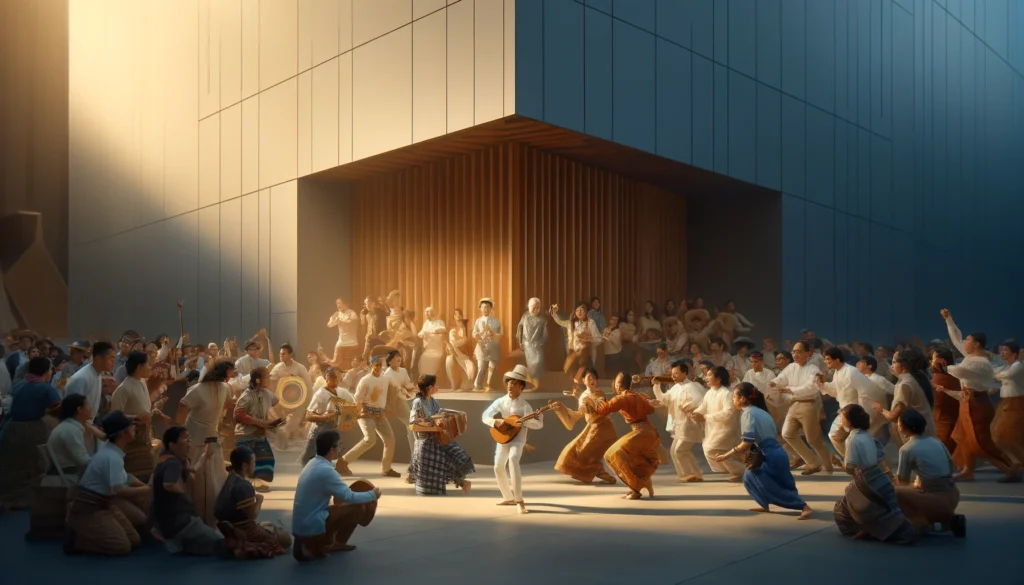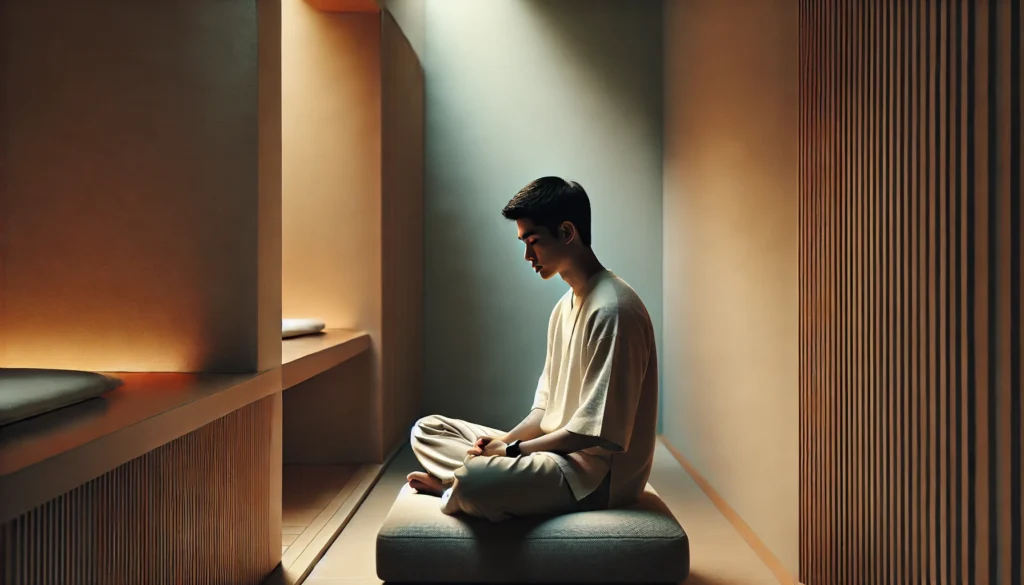Music and dance have been integral components of Filipino culture for centuries, serving as powerful mediums for expressing national identity, preserving traditions, and celebrating the rich tapestry of Philippine society. From the rhythmic beats of indigenous instruments to the graceful movements of traditional dances, these art forms have played a crucial role in shaping the Filipino spirit and fostering a sense of unity among the diverse communities across the archipelago. This comprehensive exploration delves into the historical roots, cultural significance, and contemporary relevance of music and dance in the Philippines, highlighting their importance in social, religious, and artistic contexts.
Historical Roots of Filipino Music and Dance
The origins of Filipino music and dance can be traced back to the pre-colonial era, where indigenous tribes used these art forms as essential elements of their rituals, ceremonies, and daily life. With the arrival of Spanish colonizers in the 16th century and subsequent American influence in the 20th century, Filipino music and dance underwent significant transformations, incorporating foreign elements while retaining their distinct cultural essence.
Pre-colonial Period
During the pre-colonial period, music and dance were deeply intertwined with animistic beliefs and tribal customs. Indigenous instruments such as the kulintang (a set of gongs), the kudyapi (a boat-shaped lute), and various types of bamboo flutes were used to create rhythmic patterns and melodies that accompanied religious rituals, harvest celebrations, and courtship ceremonies.
Spanish Colonial Influence
The 333 years of Spanish colonial rule left an indelible mark on Filipino music and dance. The introduction of Christianity brought about the development of religious music, including the pasyon (chanting of the passion of Christ) and the villancico (Christmas carol). European musical instruments like the guitar, bandurria, and violin were incorporated into traditional Filipino ensembles, giving birth to new musical genres such as the rondalla.
American Period and Modern Influences
The American occupation in the early 20th century introduced new musical styles, including jazz, blues, and rock and roll. This period saw the rise of popular music in the Philippines, with local artists adapting and blending Western musical elements with traditional Filipino sounds. The result was a unique fusion that continues to evolve in contemporary Filipino music.
Cultural Significance of Music in Filipino Society
Music plays a multifaceted role in Filipino society, serving as a means of expression, a tool for social cohesion, and a repository of cultural heritage. Its importance is evident in various aspects of Filipino life, from religious ceremonies to social gatherings and political movements.
Religious and Spiritual Expression
In the predominantly Catholic Philippines, music is an essential component of religious worship. Church choirs, religious hymns, and devotional songs are integral to Filipino spiritual life. Moreover, indigenous communities continue to use traditional music in their spiritual practices, maintaining a connection to their ancestral beliefs.
Social Bonding and Celebration
Music is a cornerstone of Filipino social gatherings, from family reunions to community fiestas. Karaoke, a popular pastime in the Philippines, exemplifies the Filipino love for music and its role in fostering social connections. Traditional songs and contemporary hits alike serve as a unifying force, bringing people together across generations and social backgrounds.
Cultural Preservation and Identity
Filipino music serves as a vital link to the country’s cultural heritage. Traditional folk songs, lullabies, and epic chants preserve ancient stories, values, and ways of life. By passing these musical traditions from one generation to the next, Filipinos maintain a strong sense of cultural identity in the face of globalization.
Political and Social Commentary
Throughout Philippine history, music has been a powerful tool for political expression and social commentary. From revolutionary songs during the Spanish colonial period to protest music during the Marcos era, Filipino artists have used their craft to voice dissent, inspire change, and raise awareness about social issues.
The Role of Dance in Filipino Culture
Dance in the Philippines is not merely a form of entertainment but a living embodiment of the nation’s history, values, and aspirations. Filipino dances reflect the country’s diverse cultural influences and serve multiple functions in society.
Traditional Dances
The Philippines boasts a rich repertoire of traditional dances, each with its own unique story and significance. Some notable examples include:
- Tinikling: Often considered the national dance of the Philippines, this bamboo pole dance originated in Leyte and mimics the movement of tikling birds.
- Singkil: A royal dance from the Maranao people of Mindanao, featuring intricate footwork between moving bamboo poles.
- Pandanggo sa Ilaw: A dance that showcases grace and balance as performers dance with candles or oil lamps balanced on their heads and hands.
These dances, among many others, serve as windows into the diverse cultural landscape of the Philippines, reflecting regional traditions, historical events, and social customs.
Religious and Ritual Dances
Many Filipino dances have religious or spiritual significance. The Subli of Batangas, for instance, is a devotional dance performed in honor of the Holy Cross. In indigenous communities, ritual dances continue to play a crucial role in spiritual practices, healing ceremonies, and community gatherings.
Social and Festive Dances
Dance is an integral part of Filipino celebrations and social events. From the lively Cariñosa courtship dance to the festive Maglalatik coconut dance, these performances bring communities together, fostering a sense of shared cultural heritage and joy.
Contemporary Dance and Cultural Fusion
Modern Filipino dance has evolved to incorporate elements from both traditional and international dance styles. Contemporary choreographers and dance companies in the Philippines often blend indigenous movements with ballet, modern dance, and hip-hop, creating innovative performances that bridge the gap between tradition and modernity.
Music and Dance Education in the Philippines
The importance of music and dance in Filipino culture is reflected in the country’s educational system. Both formal and informal educational initiatives play a crucial role in preserving and promoting these art forms.
School Curricula
Music and dance are integral components of the K-12 curriculum in the Philippines. Students are introduced to traditional Filipino music and dances from an early age, fostering an appreciation for their cultural heritage. Many schools also offer extracurricular activities such as choirs, dance troupes, and rondalla ensembles.
Specialized Institutions
Several institutions in the Philippines are dedicated to the study and preservation of traditional Filipino music and dance. Notable examples include:
- The Philippine High School for the Arts
- The University of the Philippines College of Music
- The Ramon Obusan Folkloric Group
These institutions play a vital role in training the next generation of Filipino artists and cultural ambassadors.
Community Programs and Workshops
Numerous community-based programs and workshops throughout the country offer training in traditional music and dance. These initiatives not only help preserve cultural practices but also provide opportunities for cultural exchange and community building.
The Economic Impact of Music and Dance in the Philippines
Beyond their cultural significance, music and dance contribute substantially to the Philippine economy through various industries and sectors.
Entertainment Industry
The Filipino music industry is a significant contributor to the country’s economy. According to data from the Philippine Statistics Authority, the audio and video production and distribution sector contributed approximately 0.04% to the country’s GDP in 2017, amounting to billions of pesos.
Tourism
Traditional music and dance performances are major attractions for both domestic and international tourists. Cultural shows featuring Filipino dances and music are common in hotels, resorts, and cultural centers, contributing to the tourism industry’s growth.
Export of Cultural Products
Filipino musical instruments, recordings, and dance costumes are exported to various countries, particularly to areas with large Filipino diaspora communities. This cultural export contributes to the country’s foreign exchange earnings.
Challenges and Preservation Efforts
Despite their importance, Filipino music and dance face several challenges in the modern era, including:
- Globalization and Western cultural influence
- Declining interest among younger generations
- Limited funding for cultural preservation initiatives
To address these challenges, various efforts are being made by government agencies, non-governmental organizations, and cultural institutions:
- Cultural Mapping Projects: Initiatives to document and preserve traditional music and dance forms across the Philippines.
- Digital Archiving: Efforts to create digital archives of traditional music recordings and dance performances.
- Cultural Exchange Programs: International collaborations and showcases to promote Filipino music and dance globally.
- Policy Initiatives: Government policies aimed at promoting and protecting intangible cultural heritage, including music and dance traditions.
Contemporary Trends and Future Outlook
The landscape of Filipino music and dance continues to evolve, adapting to changing times while striving to maintain its cultural roots. Some notable trends include:
Fusion and Innovation
Contemporary Filipino artists are increasingly blending traditional elements with modern styles, creating innovative music and dance forms that appeal to younger audiences while preserving cultural essence.
Digital Platforms and Global Reach
The rise of digital platforms has provided Filipino musicians and dancers with unprecedented opportunities to showcase their talent to a global audience. Social media, streaming services, and online performances have become vital tools for promoting Filipino culture worldwide.
Cultural Diplomacy
Filipino music and dance serve as powerful instruments of cultural diplomacy, fostering international understanding and cooperation. Cultural performances are often featured in diplomatic events, international festivals, and cultural exchange programs.
Conclusion
Music and dance remain integral to the fabric of Filipino society, serving as vibrant expressions of national identity, cultural heritage, and artistic innovation. From the haunting melodies of indigenous instruments to the dynamic rhythms of contemporary Filipino pop, from the graceful movements of traditional dances to the bold choreography of modern performances, these art forms continue to play a crucial role in shaping the Filipino spirit and showcasing the country’s rich cultural tapestry to the world.
As the Philippines navigates the challenges and opportunities of the 21st century, the preservation and promotion of its music and dance traditions will be essential in maintaining a strong sense of cultural identity. By embracing innovation while honoring tradition, Filipino music and dance are poised to continue their evolution, inspiring future generations and serving as powerful ambassadors of Philippine culture on the global stage.
Disclaimer: This article presents information based on historical data and cultural research available up to 2017. While every effort has been made to ensure accuracy, cultural practices and statistics may have evolved since then. Readers are encouraged to consult current sources for the most up-to-date information. If you notice any inaccuracies, please report them so we can correct them promptly.




